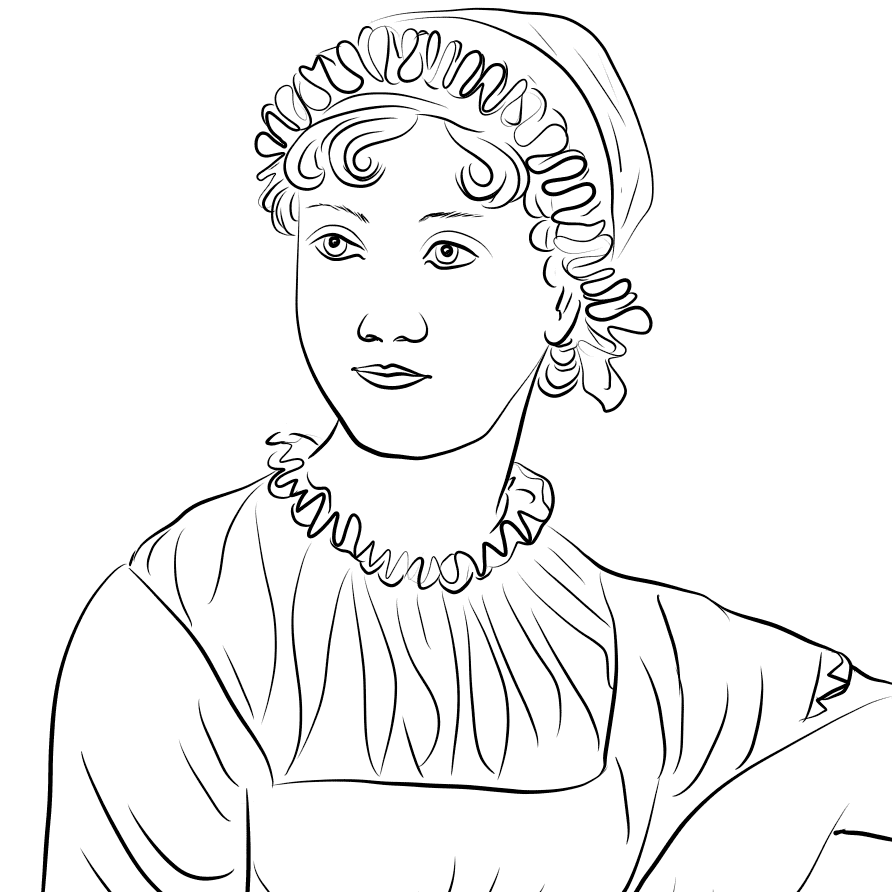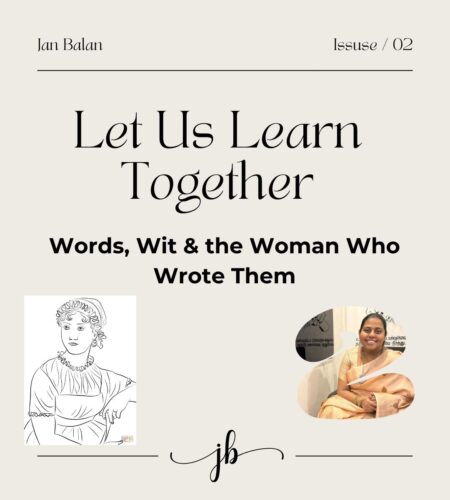Let Us Learn Together – Issue 2: Words, Wit & the Woman Who Wrote Them is born after a reading.
After reading a beautiful article in The Hindu – Magazine, I found myself smiling at the quiet brilliance of Jane Austen. Her words, her world, her wit; it all stirred something in me. I knew the second issue of Let Us Learn Together had to be dedicated to her. So, what will you discover this time?
This issue’s key takeaways:
✅ Learn how Jane Austen popularized everyday phrases like puppy love and dinner party
✅ Discover the life-saving role of the humble comma
✅ Peek into the world of cross-writing, Austen’s clever way to save paper
✅ Get inspired by timeless language stories with a modern twist
Puppy Love & Dinner Party – Courtesy of Jane Austen
Think “puppy love” is a modern teen phrase? Think again! The first recorded use of “puppy love”—to describe youthful infatuation—appeared in Jane Austen’s 1815 novel Emma.
And that elegant social ritual we call a “dinner party”? Austen helped popularize the term through her vivid depictions of refined gatherings where glances, gossip, and matchmaking simmered over roasts and puddings.

These phrases slipped into English thanks to her sharp social observations and timeless prose.
📽️ Curious to hear how she made these words stick?
Check out my reel and let’s uncover more together!
The Comma That Saved Grandma
Lila proudly read her sentence aloud: “Let’s eat Grandma!”
Everyone gasped. Even Grandma dropped her spoon. Her teacher chuckled gently. “Lila, you forgot the comma.”

With a flick of her pen, the sentence changed: “Let’s eat, Grandma!”
Now it was an invitation, not a threat. Lila laughed, slightly red-faced. “So commas really do save lives?” Exactly,” said the teacher. “They tell the reader when to pause—just like a breath in conversation.”
From that day on, Lila never forgot her commas. Especially when Grandma was around.
Crisscrossed Conversations: How Jane Austen Saved Paper
Ever seen a letter that looks like a crossword puzzle?

In the early 1800s, the time Jane Austen lived and wrote, paper was expensive, and postage was charged by the number of sheets. Every page counted. So, people got creative. After writing in one direction, they’d turn the paper 90 degrees and write across the existing lines. This clever technique, called cross-writing, helped them save space and money.
It looks nearly impossible to read today, but back then, it was common—and Jane Austen herself used it often in her personal letters. A simple reminder of how resourceful communication was in a world without email or instant messaging.
Like insights from the past that still speak to the present?
Subscribe to my newsletter and stay tuned.
Let us learn together, through time, text, and timeless stories.
Subscribe to our email newsletter to get the latest posts delivered right to your email.

Nice info about Jane Austen and her writings in 1815.
The importance of comma’s usage in a sentence.
Letters with Cross writing in olden days.
Neatly crafted content.